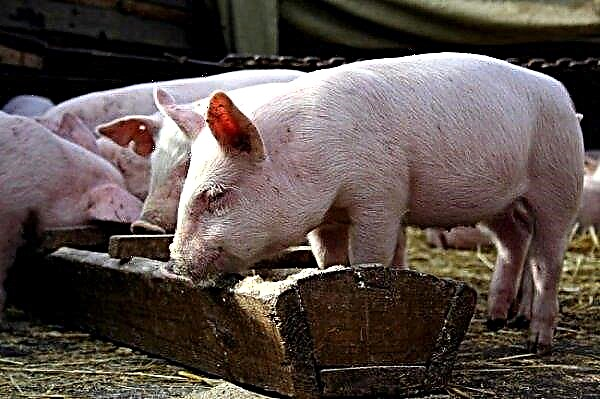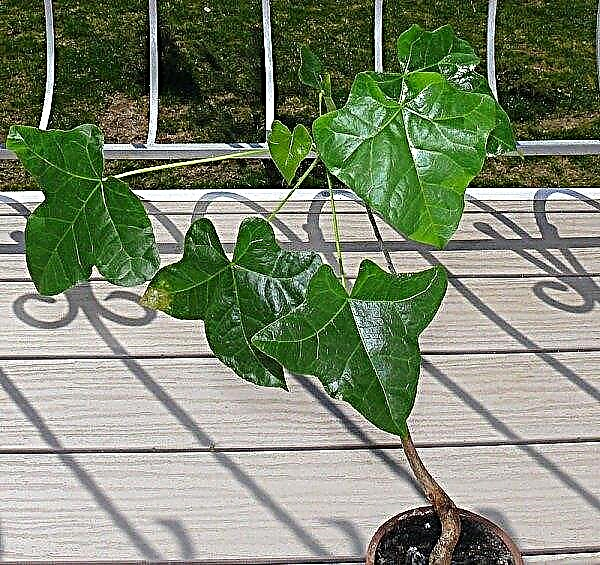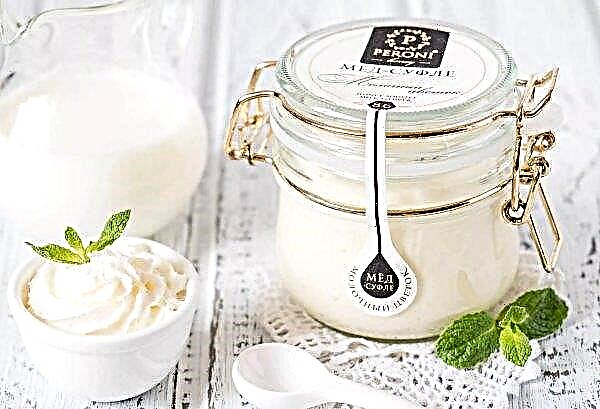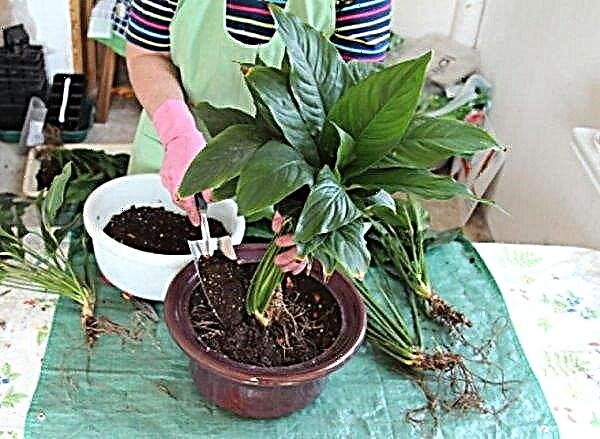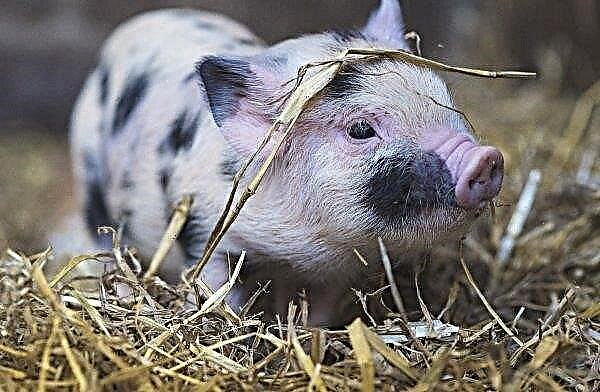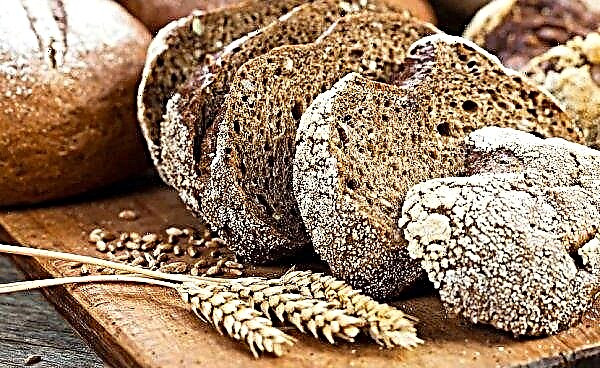Carrots are a product that is valuable not only for its many beneficial properties, but also for its high shelf life, which allows it to preserve last year's crop at least until spring. However, for this, as a general rule, you must have at your disposal a cellar. This review will discuss whether it is possible to store raw carrots for the winter in an ordinary refrigerator, how to do it so that it does not fade, how much root vegetables can be kept without freezing, and which varieties are best used for harvesting.
How to harvest and prepare for storage
For long-term storage in the refrigerator, you always need to use root crops of your own cultivation, since vegetables grown for sale very often contain various chemical additives that not only negatively affect the quality of the product, but also reduce its harvesting suitability.

In order for the root crop to be suitable for harvesting for the winter, it must be correctly harvested and prepared. First of all, you need to start harvesting on time, since both unripe and overexposed root crops subsequently deteriorate very quickly. To determine the harvesting time, it is necessary to take into account the manufacturer's information on the ripening dates of this variety, usually calculated from the moment of sowing the seeds. An additional sign that the carrots are ripe is the appearance of white roots on its nose and yellowness on the lower leaves (but not the lightening of the root crop itself, as many say).
Important! The yellow color and soft texture of carrots do not indicate that the root crop has matured, but that it is sick. Such specimens are not suitable for long harvesting.
Typically, carrot varieties, characterized by high levels of keeping quality, are harvested in early autumn, until about mid-September, when the night temperature drops below + 5 ... + 8 ° C. It is very important to catch up to the beginning of the rainy season and, in addition, to choose the most dry day for harvesting: it is the moist ground at the time of carrot extraction that most often explains why, it would seem, a high-quality root crop will quickly become loose and rot.
Another possible reason for this phenomenon is the oversaturation of the vegetable with moisture during the growing season, which, in particular, can occur if the summer was very cold and rainy or if the irrigation regime was not properly organized (any experienced gardener knows that at least three weeks before harvesting any root crops must be completely stopped watering).
Another trick that increases subsequent stamina is surface treatment of the beds with a 5% solution of copper sulfate 5 days before the expected date of harvesting. This precaution stimulates the outflow of nutrients from the “tops” to the “roots”, and also blocks diseases that develop in the tops and can affect the crop at the stage of its collection.
Cleaning itself must be carried out in compliance with the following rules:
- it is only necessary to use a shovel, since a fork can most likely damage the skin of root crops;
- you must carefully remove the vegetable from the ground, remove the remains of the soil by hand or gently shake it, in no case beating the root crops on the ground and without wielding a knife or other sharp objects to clean the ground;
- immediately after digging up the carrots from it, you need to cut the tops at a height of about 2 cm from the root crop.
For bookmarks for storage, those vegetables are selected that meet the following requirements:Important! To prevent the carrots from sprouting in the refrigerator, some housewives advise to trim its upper part by 1-2 cm, allowing the cut-off place to dry completely before laying.
- have the correct form and solid structure;
- do not have cracking, damage, signs of withering or decay;
- are fully ripe (the diameter at the top should be at least 5 cm).
After sorting, the crop is placed for a day in a dark place for complete drying. It is desirable that the air temperature in such a room be approximately + 5 ° C: such pre-cooling significantly increases the time for subsequent storage of root crops.

How to store carrots at home in an apartment in the refrigerator
There are several ways to preserve a carrot crop in the refrigerator. The choice depends on the volume of the crop and the size of the chamber, the variety and condition of the root crops, the periods during which it is planned to use vegetables, as well as the personal preferences of the particular hostess.
Unwashed carrots in plastic bags
As a general rule, washing and peeling carrots in preparation for storage should in no case be done. Such procedures damage the protective layer on the surface of root crops and sharply reduce their durability, and therefore are used only in exceptional cases for short-term blanks or before freezing.
Most often, carrots are stored in a plastic bag, laying it in a container for vegetables.Important! The less root crops will be packed in the bag, the longer they will last. In industrial conditions, bags with a capacity of up to 35 kg are used, but for home refrigerators it is better to stop at packaging of 5-6 pieces, no more.
This method is considered very reliable, however, two conditions must be met:
- Before putting the product in the refrigerator in the bag, you need to make several holes for the release of carbon dioxide, which the root crops emit during storage.
- The contents of the package should be checked as often as possible, timely identifying and deleting all those instances on which the first traces of damage appear.

Unwashed carrots in paper
Instead of plastic bags, some housewives use paper to store carrots, and best of all, a regular newspaper. If each root crop is wrapped in several layers of such paper, while preventing vegetables from contacting each other, it is possible to significantly increase the shelf life of the crop by reducing the evaporation of moisture from the pulp of the vegetable, preventing its dehydration and better oxygen circulation, which stops the rotting process.
Washed carrots
Despite the fact that most experts categorically do not recommend wetting the root crops before putting them into storage, there are arguments in favor of the preliminary removal of dirt and earth from vegetables through water.
In particular, the following factors testify to the storage of washed carrots:Did you know? Perhaps the biggest admirers of carrots in the world are the Americans. They even have a special holiday - National Carrot Cake Day, which is celebrated every year on February 3, and in the state of California (Holtville), a week-long carrot festival takes place in the same month.
- the land is a natural habitat for many bacteria and other pathogenic microorganisms, thus, by cleaning root crops from it, the hostess reduces the likelihood of damage to the crop by various diseases;
- on pure vegetables, all the damages, cracks, traces of illnesses and other problems are much better visible, indicating that this specimen will not be stored for a long time and should be isolated from others the sooner the better.
You can store washed carrots in the same way as unwashed carrots, although there are several additional ways to use such a product for harvesting.
Washed carrots in a container
Washed carrots are very convenient to store by putting it in food containers - plastic or glass. If the container is equipped with a vacuum lid, the shelf life of vegetables in it is approximately doubled.
Video: How to store washed carrots in a container
Washed and peeled in water or a damp towel
If for some reason the washed and peeled carrots could not be used immediately, it can be stored for several days by lowering it in a container with water and putting this container in the refrigerator. If the water is changed periodically, the vegetable can retain its freshness even longer. In the same way, you can prevent the peeled vegetable from withering by wrapping it in a refrigerator with a wet towel or other moisture-absorbing cloth, which needs to be moistened again from time to time. However, this method makes it possible to save the vegetable for no more than a week.
In cling film
If you want to extend the shelf life of heavily contaminated carrots after removing land from it, each instance can be tightly wrapped in several layers of cling film and then put the resulting "cocoons" in the vegetable compartment. If the carrots were thoroughly dried, then in this form it can persist for a long time.
Did you know? The only vitamin that is not less afraid of low temperatures than heat is ascorbic acid. However, with deep and rapid freezing, the loss of vitamin C is only 15%, while, for example, drying at room temperature reduces the amount of this vitamin in the product by 70%!
Frozen
However, the only way to truly preserve the crop of vegetables in the refrigerator until next spring is to freeze it.
The only drawback of freezing is that after such a harvest, carrots lose their crisp structure and therefore are no longer suitable for preparing those dishes where this vegetable should be used fresh. However, for subsequent boiling, stewing or baking, frozen carrots are no less suitable than fresh ones.
To freeze root vegetables, they need to be washed and cleaned, then chopped in the way that is necessary for preparing a future dish with this ingredient - grate, cut into slices, straws, etc. Then, vegetables thus prepared should be laid out in one layer on a flat surface and send to the freezer for quick freezing for several hours.
The carrots prepared in this way are poured into portioned containers (freezing bags with a special fastener, plastic containers, disposable cups with a sealed lid, etc.) and sent to the freezer for permanent storage.
Important! After defrosting, it is not recommended to re-freeze food, so you need to pack them immediately so that each portion can be used in its entirety.
If you wish, you can freeze not only grated but also whole carrots by simply wrapping the peeled root crop in a film and putting it in the freezer. Such a vegetable can subsequently be added, without thawing, to the broth to give it an additional taste, and also boiled for use in various salads (for example, olivier or herring “under a fur coat”).
Shelf life of carrots in the refrigerator
The shelf life of carrots in the refrigerator depends on the initial quality of the raw materials, the technical characteristics of the chamber itself, as well as on the selected method of harvesting. On average, following all the above recommendations, you should focus on the norms indicated in the table.
| Type of workpiece | Shelf life |
| Unwashed root vegetables in a plastic bag | 4–9 weeks |
| Unwashed root vegetables in paper | 8-15 weeks |
| Washed root vegetables in the section for vegetables | 10-15 days |
| Washed and peeled root vegetables in water | 3-7 days |
| Washed unpeeled root crops in wet tissue | 8-15 days |
| Washed root vegetables in a plastic container | 7-10 days |
| Washed root vegetables in a glass container with a vacuum lid | 10-15 days |
| Washed root vegetables wrapped in individual packaging from a food film | 5-12 weeks |
| Frozen vegetables | Up to 12 months |
The best varieties with high stubbornness
In the suitability of vegetables for long-term storage, not the least role is played by their varietal affiliation, or rather, such a quality as shelf life. In order not to try to memorize the most mellow varieties of carrots, you just need to know that those that are best suited for storage are:
- characterized by late ripening (early vegetables are always intended for immediate consumption, they have less taste and nutrition, and they cost much more);
- grown in the zone that corresponds to their regionalization (in unfavorable climatic conditions, the root crop grows weak and, accordingly, will not be stored for a long time);
- have an elongated shape (the shorter the carrots, the usually worse it is stored);
- have increased resistance to cracking.
We advise you to read about the cultivation of such carrot varieties as Dordogne and Chantagne.
If we talk about specific examples, then high variability is convincingly demonstrated by such varieties and hybrids of carrots, such as:
- Boltex;
- Vitamin
- Geranda;
- Gribovchanin;
- Grossa;
- Dolyanka;
- Emperor
- Cardinal;
- Cascade F1;
- Queen of autumn;
- Red giant;
- Losinoostrovskaya 13;
- Moscow winter;
- Nantes 4;
- Olympus
- Sweet winter;
- Tuchon;
- Flacca;
- Flaccoro;
- Shantane 2461 and many others.

It should be noted that among the early and mid-ripe varieties of carrots, you can also choose those that are suitable for long-term storage.
In particular, they have good stubbornness in this category, for example:
- Alenka;
- Artek;
- Bangor
- Vita Long;
- Carrot;
- Lagoon;
- Nandrin F1;
- Samson;
- Forto
- Chance.
It is possible to save carrots for several months so that it does not rot and does not fade, not only in the cellar, but also in an ordinary city apartment, including in the refrigerator. To do this, you need to know and follow only a few simple rules, especially regarding the selection and preparation of raw materials, as well as the conditions that root crops need to maintain their appearance, nutritional properties and taste.Did you know? The Guinness Book of Records is the largest carrot weighing 10.18 kg, grown in Minnesota by a farmer named Christopher Qually. But the longest root crop grew in the county of Leicestershire (UK) at the local gardener Simon Smith, the length of this carrot was 120 cm.


